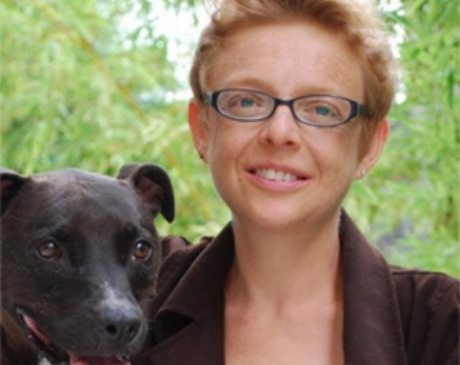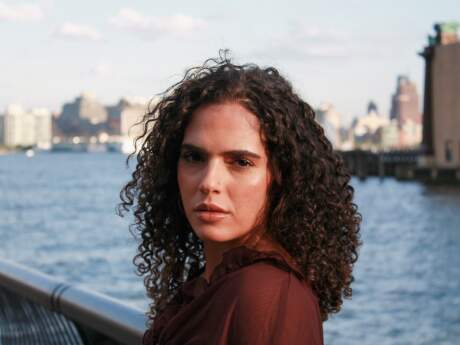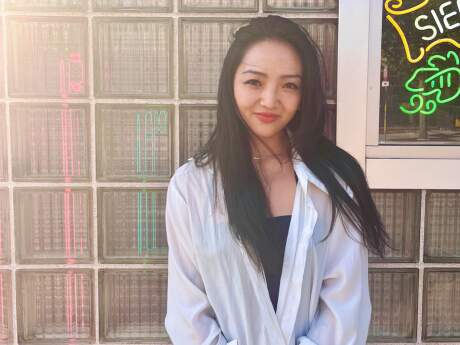In Their Own Words
Anne Shaw's “Shatter and Thrust as a Series of Silver Gelatin Prints”

Shatter and Thrust As a Series of Silver Gelatin Prints
If the birches' sticks are edged in black, then silence
means consent. If a skiff slips loose
from its mooring, then nothing can be tied
to a bed or elsewhere, no one can be held
though the white lake in the distance still craves the diver's form
remembering how muscular, how slim,
and how its water, spring-fed, cold, curled
around his body as he dove—
If the mirror in her room could play it back, scene by scene, across its silver skin,
each moment as it was, its arc and gleam,
then the secret language that precedes desire
could be deciphered, spoken in, annulled.
Instead she writes oh fuck oh fuck, the f's
curling back on themselves, the way she's been taught to, scene by scene
as the boy in the memory lights a spliff, hand cupped,
in no distress, not looking up. Then the little bobbin shuttles left
still spooling out its thread, as if to speak, as if to draw him back
though lately she thinks it is more
that a thin communion snaps in two each morning as she wakes (Don't tell
us about the heart you beg Tell us about the flesh Because everyone speaks
in the offing Everyone's broken inside Always already &c.,) But see:
if grass slants dark in the snow-field, if a bird flew
watching for snares, if the bird were a sparrow launched in a reckless wind,
if she felt herself entangled, if she could not close her wing,
then extricated, fitted with a band—
If opening the hand would give release
—a seamless gesture, flight and opening—
then the body might give up its wish, relinquish
what it is: a white field of desire, a field of questions asking
toward their end. If I say make it hurt if I say get the belt
I am thinking of the freeway, its plastic barricades,
and of such little solace as there is. The boy in oval sunglasses
squatting in the dust, his look intent; the boy splayed on the bed
asleep or half asleep, her coming in—
The photographs she's taken in her mind
because the body can't be trusted, because the body
soon forgets, though absence enters, claims her
as its own. If a stop sign slants through the morning facing the other way,
if the post is splintered, the grain of it rough in the print
on this road I walk down toward my end
the white erasure hovering, its dream of being found
and mine, of brokenness beyond repair—
beyond want of repair—then the rowboats, too,
are errant, slipping past the buoys. How well I loved you in that other place
I once called home, I once called manifest.
As if all that burned were burning. In that room where the light cried out.
How small the body seems now. How tough, how absolute.
When I say hurt me, this is what I mean.
On "Shatter and Thrust As a Series of Silver Gelatin Prints"
One of the interesting things about the poem--to me, anyway--is that it was semi-planned. Although I worked through many drafts, from the start I had a sense of what its structure would be and what I wanted it to contain. To be specific, I knew that I wanted to write a long poem in couplets that was organized around if/then statements. I love the mysterious causality that such statements can imply. The poem itself was written in late 2008 and early 2009, during a time of intense sorrow and personal loss. I suppose these structuring mechanisms were a loose way of organizing what were otherwise overwhelming emotions.
At any rate, about this time, I stumbled onto the work of photographer Gary Green through a link on a friend's website. He is a photographer living in Maine; I had just moved to Vermont. I was seeing the landscapes represented in Green's photos and walking through similar landscapes around me, attempting to connect with them on a visceral level. Although I could appreciate the beauty of Vermont, I felt profoundly uncomfortable and displaced there. I deeply missed my home in Milwaukee. It seemed so remote, so utterly unreachable. I wanted to give expression to what I was experiencing. As I worked, I allowed Green's photos to infiltrate my consciousness, to become one side of the if/then equations.
I also knew that wanted the poem to incorporate vivid visual imagery. Much of this was based on memory. For instance, the reference to bird-banding in the poem is a direct result of a workshop I had participated in the previous spring. I was amazed to learn that the birds are captured with very fine nets, something like a volleyball net, and I remember feeling the quick, frantic beating of the bird's whole body as I held it in my hand, The hold is very delicate, just a thumb and middle finger. Releasing the bird was an amazing experience; the release of my grip and the bird's flight seemed to happen at the exact same instant. I realized immediately that the bird had been poised to fly the whole time, long before I decided to open my hand. I wanted to convey a sense of that kinesthetic and emotional experience: the delicacy of holding and the instantaneousness of loss. The poem moves back and forth between disparate images, but it is really structured around that single idea.


